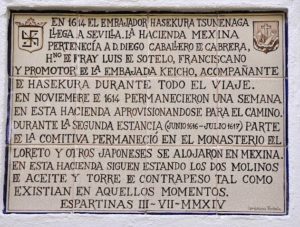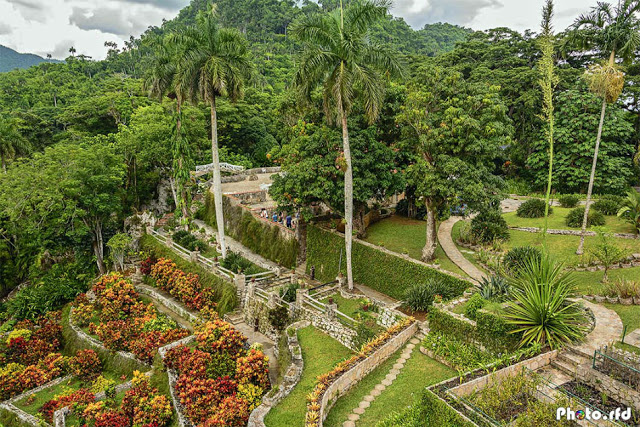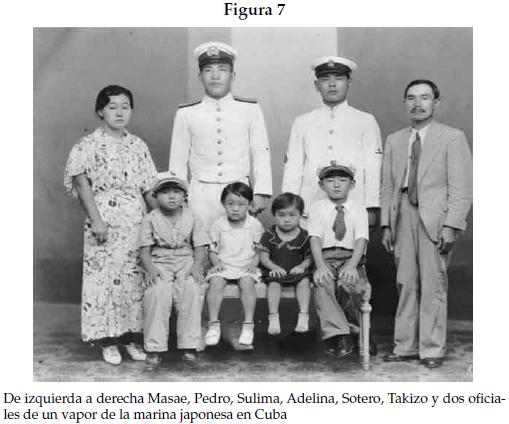The Diario de la Marina reported that on September 9, 1898, the first Japanese arrived in Cuba with plans to settle on the island, to foment a community, which counted with more than a thousand Japanese immigrants. The Japanese Y. Ozuna arrived in the Orizawa steamer that had left Veracruz in Mexico; but already 284 years before, in July of 1614, the ship “San Juan Bautista”, that had left from the port of Tsukinoura, to the north of the present Tokyo and to the control of the samurai Hasekura Tsunenaga with a group of 180 Japanese that disembarked in the bay of Havana, in transit to Seville, Spain, with the purpose of establishing a direct trade between Japan and Mexico and obtaining permission to propagate Christianity in the Miyagi prefecture.
The arrival of the Japanese citizen Ozuna was followed by other Japanese, affected by the situation of the country with the Meiji Restoration, which modified the political and social structure of Japan and involved a change that ended the Shogunate, a feudal society, to take a capitalist economy with a persistent Western influence and as an important element ended with the privileges of the samurai.
The Japanese emigration to Cuba came to add a few hundred people, was not as massive as Brazil and Argentina and Peru and was composed mostly of men, who formed a family with Cubans and as a great impediment, had to adapt to the local diet , because many ingredients of their eating habits are not achieved on the Island.
Despite being few, they were also dispersed throughout the national territory, although there were attempts to group, among which the one created in 1914 by Kogawa Fujishiro in Central Constancia, in Abreus, Las Villas, today province of Cienfuegos and in 1920 it is repeated in Cienfuegos with other immigrants, but the most important was the one created in Isla de Pinos, where they founded the first agricultural production cooperative known in Cuba, as well as fostering the introduction of chemical fertilizers.
The Japanese also founded the Japanese Society of Cuba and the Japanese Society of Instruction and Recreation Showa (Showa in Japanese means “Illuminated Peace”), both in Havana.
Japanese colonies on the Isle of Pines.
The arrival to the Isle of Youth of the first Japanese emigrant was in 1908, Misaro Miyaki, who arrived from Havana, where he had come from Mexico in 1907. Already in 1947 the figure was 130 people. Like other foreigners, faced with the possibility of enjoying the same advantages as the Americans residing in the territory when defining the US jurisdiction over the Isle of Pines, many Japanese settled on their lands.
It is from 1924 when the travel company “Overseas” facilitates the transit to Cuba of the largest number of Japanese immigrants. The Japanese emigration to Cuba was basically composed of men, so some of them formed a family with Cubans and adapted to local food, since many ingredients of Japanese cuisine were impossible to achieve on the island. In it the Japanese formed the first agricultural production cooperatives known in Cuba, and introduced the use of chemical fertilizer.
There are investigations that affirm that in each group or Japanese colony, there was a kind of military-type leadership and that in spite of the difficulties or lack of ways of communicating, and the dispersion of them, they were always in contact.
In the North American settlement in Santa Barbara on the Isle of Pines, there were about fifty Japanese people dedicated mainly to the cultivation of cucumber. After the Second World War the cultivation of this vegetable continued, but the production of melon, other vegetables and smaller fruits is extended with the characteristic of doing it on the basis of an intensive agriculture based on a low use of mechanization but with high efficiency.

Sanrichiro Shimazu died in the Nursing Home of Nueva Gerona on July 10, 2016, five months before turning 109 years old
From the 40s, the town loses much of its splendor and begins to decline, so the farms that Americans had ceased to produce or do so on a smaller scale than before, but in those lands begin to settle migrants Japanese, which together with the pineros recovered to a large extent the agricultural productions of the area. Although almost all Japanese were imprisoned for the absurd measure taken by the Batista government to please the Americans, the families of many settled in Santa Barbara, so in 1945, had a population of 1420 people.
Among those who lived those years, there was a character who came to live more than a century, a samurai, a Japanese warrior, who lived in a home for the elderly. He was one hundred and seven years old, but sometimes he said they were one hundred and eighteen. His name was Miichiro Shimazu and another Japanese also old but with his clear mind, called Nobor, narrated the blossoming of the colony of Santa Barbara in the time of his father, the tireless work of those Japanese, a lesson that unfortunately did not spread to Cuban farmers, much less those of today, and spoke of Shimazu, because the samurai had senile dementia.
Shimazu was born in 1907 and not every day you can talk about a Japanese who was a samurai, who arrived in Cuba in the 1920s, worked in Isla de Pinos with an uncle in the town of Santa Bárbara and was one of the prisoners unjustly in the Model Prison for his nationality. Among them was also very popular the farmer Mosaku Harada and his family, who had arrived in 1924 along with a group of 36 men and women.
The Japanese spread throughout the island, to be present in 46 sites in all Cuban provinces and worked more frequently in agriculture, mines, the sugar industry, fishing, mechanics, electricity and services. And in all they gained fame not only from extremely industrious, but from intelligent and with much initiative to do everything very close to perfection.
After the revolution, fishing cooperation between the two countries is established and new Japanese immigrants arrive, albeit in a small amount. And it is built with Japanese technology, a thermoelectric plant in Cienfuegos, the most efficient in Cuba.
At the beginning of the 21st century, only fifteen first generation Nippones remained on Cuban soil. Up to the 2016 only remained the samurai Shimazu, sho died that year in a Home for the Elderly of the Isle of Youth. But up to the fifth degree of consanguinity they reach more than twelve hundred members of the Japanese Japanese Community, those that have presence in all the Cuban territorial divisions except in Guantánamo.
LA PRESENCIA JAPONESA EN LA ISLA DE CUBA.
Reportaba el Diario de la Marina que el 9 de septiembre de 1898 llegó a Cuba el primer japonés con planes de establecerse en la isla, para fomentar una comunidad, la cual contó con más de un millar de inmigrantes nipones. El japones Y. Ozuna llegó en el vapor Orizawa que había partido de Veracruz en México; pero ya 284 años antes, en Julio de 1614, el navío “San Juan Bautista”, que había salido desde el puerto de Tsukinoura, al norte de la actual Tokio y al mando del samurái Hasekura Tsunenaga con un grupo de 180 japoneses que desembarcaron en la bahía de La Habana, en tránsito a Sevilla, España, con el propósito de establecer un comercio directo entre Japón y México y conseguir permiso para propagar el cristianismo en la prefectura de Miyagi.
La llegada del ciudadano japones Ozuna fue seguida por otros japoneses, afectados por la situación del país con la Restauración Meiji, que modificó la estructura política y social del Japón e implicó un cambio que acabó el Shogunato, una sociedad feudal, para tomar una economía capitalista con una persistente influencia occidental y como elemento importante terminó con los privilegios de los samuráis.
La emigración japonesa a Cuba llegó a sumar unos centenares de personas, no fue tan masiva como hacia Brasil y Argentina y Perú y estaba compuesta mayoritariamente por hombres, los que formaron familia con cubanas y que como gran impedimenta, tuvieron que adaptarse a la dieta local, porque muchos ingredientes de sus hábitos alimenticios no se consiguen en la Isla.
A pesar de ser pocos, también se dispersaron por todo el territorio nacional, aunque existieron intentos de agruparse, entre las que destacan la creada en 1914 por Kogawa Fujishiro en el Central Constancia, en Abreus, Las Villas, hoy provincia de Cienfuegos y en 1920 se repite en Cienfuegos con otros inmigrantes, pero la más importante fue la creada en Isla de Pinos, donde fundaron la primera cooperativa de producción agrícola que se conozca en Cuba, así como propiciaron la introducción de fertilizantes químicos.
También los japoneses fundaron la Sociedad Japonesa de Cuba y la Sociedad Japonesa de Instrucción y Recreo Showa (Showa en japonés significa “Paz Iluminada”), ambas en La Habana.
Colonias japonesas en la Isla de Pinos.
La llegada a la Isla de la Juventud del primer emigrante japonés fue en 1908, Misaro Miyaki, que llegó desde la Habana, a donde había venido procedente de México en 1907. Ya en 1947 la cifra era de 130 personas. Como otros extranjeros, ante la posibilidad de gozar de las mismas ventajas que los americanos residentes en el territorio cuando se definiera la jurisdicción estadounidense sobre Isla de Pinos, muchos japoneses se asentaron en sus tierras.
Es a partir de 1924 cuando la compañía de viajes “Overseas” facilita el tránsito hacia Cuba del mayor número de inmigrantes japoneses. La emigración japonesa a Cuba estaba compuesta básicamente por hombres, por lo algunos formaron familia con cubanas y se adaptaron a la comida local, ya que muchos ingredientes de la cocina japonesa resultaban imposibles de conseguir en la isla. En ella los japoneses formaron las primeras cooperativas de producción agrícola de que se tenga noticia en Cuba, e introdujeron el uso del abono químico.
Existen investigaciones que afirman que en cada grupo o colonia japonesa, existía una especie de jefatura de tipo militar y que además a pesar de las dificultades o carencias de formas de comunicarse, y de la dispersión de los mismos, siempre estaban en contacto.
En el asentamiento norteamericano en Santa Barbara en Isla de Pinos contó con medio centenar de japoneses dedicados mayormente al cultivo del pepino. Después de la II Guerra Mundial se continuaba el cultivo de este vegetal, pero se amplía la producción del melón, otras hortalizas y frutos menores con la característica de hacerlo sobre la base de una agricultura intensiva basada en una baja utilización de la mecanización pero con alta eficiencia.
A partir de la década del 40, el poblado pierde gran parte de su esplendor y comienza a decaer, por lo que las fincas que poseían los norteamericanos cesan de producir o lo hacen en menor escala que antes, pero en esas tierras comienzan a asentarse emigrantes japoneses, los que junto a los pineros recuperaron en buena medida las producciones agrícolas de la zona. A pesar de que casi todos los japoneses fueron encarcelados por la absurda medida tomada por el gobierno de Batista para agradar a los norteamericanos, las familias de muchos se asentaron en Santa Bárbara, por lo que en 1945, tenía una población de 1420 personas.
Entre los que vivieron esos años, había un personaje que llegó a vivir más de un siglo, un samurái, todo un guerrero nipón, que vivía en un hogar de ancianos. Tenía ciento siete años, pero a veces decía que eran ciento dieciocho. Se llamaba Miichiro Shimazu y otro japonés también anciano pero con su mente clara, llamado Nobor, narró el florecimiento de la colonia de Santa Bárbara en la época de su papá, del trabajo incansable de aquellos japoneses, toda una lección que desgraciadamente no se contagió a los agricultores cubanos y mucho menos a los de hoy en día, y habló de Shimazu, porque el samurái tenía demencia senil.
Shimazu nació en 1907 y no todos los días se puede hablar de un japonés que fue samurái, que llegó a Cuba en la década de 1920, trabajó en Isla de Pinos con un tío en el poblado de Santa Bárbara y que fuera uno de los presos injustamente en el Presidio Modelo por su nacionalidad. Entre ellos también era muy popular el agricultor Mosaku Harada y su familia, que había llegado en 1924 junto con un grupo de 36 hombres y mujeres.
Los japoneses se diseminaron por toda la Isla, hasta llegar a estar presentes en 46 sitios de todas las provincias cubanas y trabajaron con mayor asiduidad en la agricultura, las minas, la industria azucarera, la pesca, la mecánica, la electricidad y los servicios. Y en todos ganaron fama no solo de laboriosos en extremo, sino de inteligentes y con mucha iniciativa para hacerlo todo muy cercano a la perfección.
Después de la revolución se establece la cooperación pesquera entre los dos países y llegan nuevos inmigrantes nipones, aunque en una cantidad pequeña. Y se construye con tecnología japonesa, una central termoeléctrica en Cienfuegos, la más eficiente de Cuba.
A principios del siglo XXI solo quedaban en suelo cubano quince nipones de primera generación. Hasta el 2016 solo quedaban el samurái Shimazu, en un Hogar de Ancianos de la Isla de la Juventud, donde murió. Pero hasta el quinto grado de consanguinidad llegan ascienden a más de mil doscientos los miembros de la Comunidad Japonesa Cubana, los que tienen presencia en todas las divisiones territoriales cubanos excepto en Guantánamo.
Agencies/MemoriasCubanas/Carlos Rodríguez/Internet Photos/Arnoldo Varona/ TheCubanHistory.com
THE CUBAN HISTORY, HOLLYWOOD.










